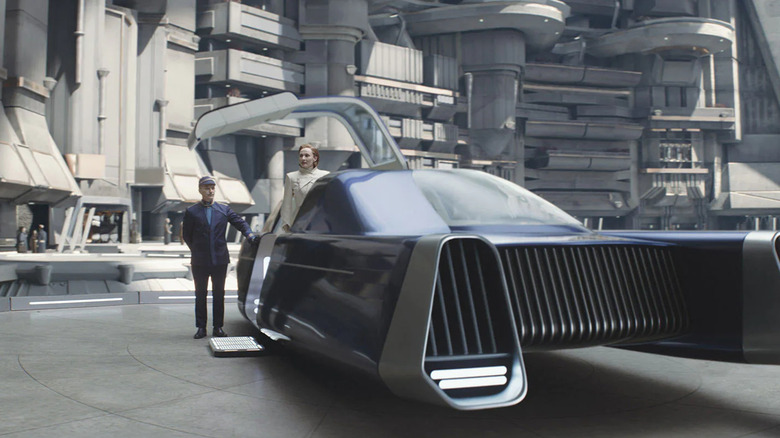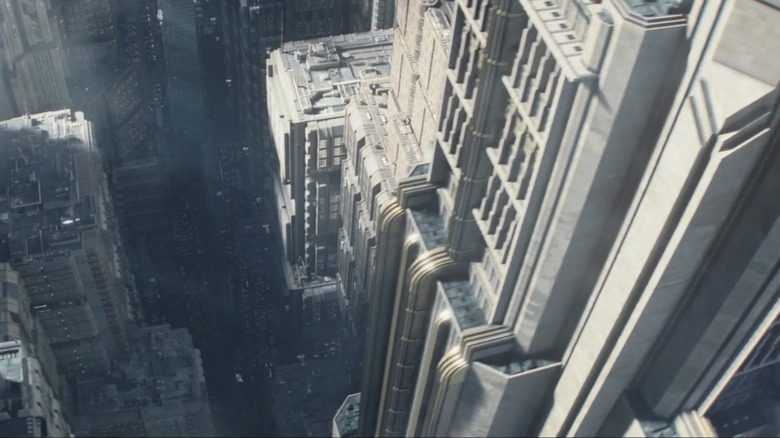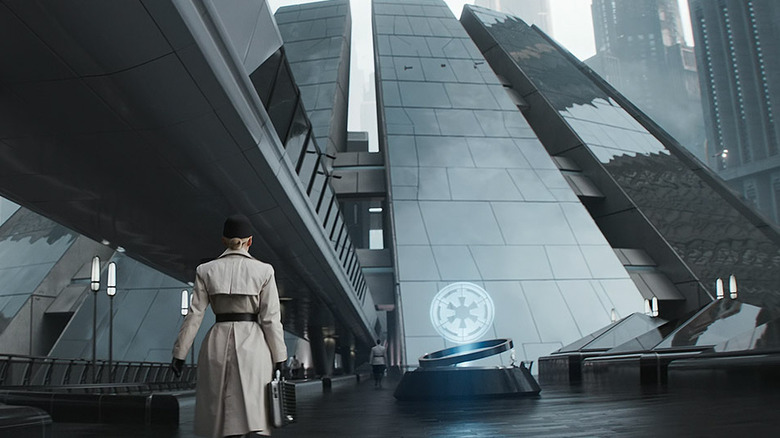Andor Creator Tony Gilroy Wanted To Treat Coruscant Like 'Any Other City' [Exclusive]
"Andor" may have a fan-favorite character in the title, but the series could not be any less enthusiastic about delivering the typical Star Wars fanfare. And to be frank, that's why the show works so well. There is a certain freshness to that idea, especially in the current state of Star Wars media on Disney+, that is nothing short of exciting and reinvigorating. Instead of making a big deal about visiting iconic locations or characters, "Andor" emphasizes the mundane nature of its world. The series manages to feel grounded without losing its grand scale, and Coruscant is a big part of that.
Although it was one of the central locations in the prequel trilogy, Coruscant has never felt this lived-in. The planet is home to some recognizable Star Wars iconography, yet there is no desire to make it more larger-than-life than it already is. On a thematic level, Coruscant distinctly benefits from treating it like any other city. More often than not, it feels like a place anyone could go visit right now. And that was exactly the intention of showrunner Tony Gilroy.
'Treat it like it's any other city'
In an interview with /Film's Jeremy Mathai, VFX producer TJ Falls talked about Gilroy's insistence on bringing the city to life without sensationalizing it:
"It has to be, it's a world we don't know, or it's a world that doesn't exist, so we have to create it. And yet, in the same vein, the way that we've approached it with Tony is that it still could be any other city that somebody could go visit. So our brief from Tony was always, 'Treat it like it's any other city. Don't make a big spectacle or glamorize a CG component of the city,' because you wouldn't do that in a real city."
Despite its grandness, the detailed architecture of Coruscant feels as if it's pulled from our own reality. The futuristic bits and bobs are still in there, just less prevalent. Every wide shot feeds into the epic scale, but it rarely feels out of the realm of possibility. The CG-heavy nature of the city environment is appropriately balanced with the details to ground it. Moreover, "Andor" uses the mundane to help tell the story of its main characters.
A galaxy not that far away
The richest planet in all of Star Wars, Coruscant is a symbol of power and wealth. The Empire operates at the highest level, and it serves as the home to the Galactic Senate. Mon Mothma (Genevieve O'Reilly) is featured prominently as a senator, with the intricacies of Coruscant as a pretty uneventful part of her daily life. We see how the upper class lives in the most lavish of places, while others are relegated to being cogs of the Empire in less-than-ideal circumstances. The design of Coruscant accentuates both sides of the same coin, not unlike our own reality.
In other parts of the city-filled planet, the day-to-day routine of the working class is even more representative of the mundane design. On his journey to becoming an incel, we see Syril Karn (Kyle Soller) move to his mom's place in what seems like an apartment complex on Coruscant. His job at the Imperial Bureau of Standards has him working at a desk in quite possibly the most uninspiring and belittling environment imaginable. Meanwhile, at the next level, Dedra Meero (Denise Gough) works more directly for the Empire but still works in an obscenely modernist building. From the top to the very bottom, Coruscant is really not that far off from a realistic world.
As the series looks to visit even more locations from the canon, it is safe to assume that it will continue to treat them as tools to tell the narrative. New episodes of "Andor" air on Wednesdays on Disney+.


